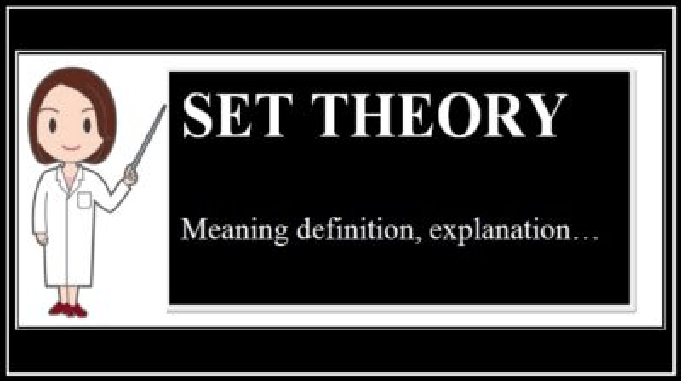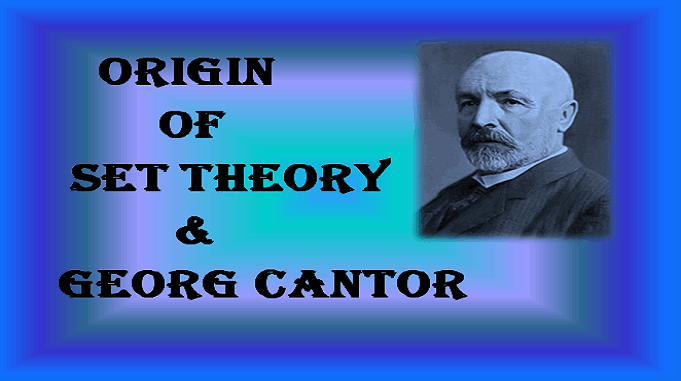
Introduction and Definition of Set Theory:
We normally talk of collections of objects of a particular type in everyday life, e.g., a deck of cards, a crowd of people, a cricket team, and so on. We also find collections in mathematics, for example, natural numbers, integers, points, etc.
A well-defined collection of distinct objects is referred to as a set.
Set Theory is a mathematical logic branch in which we study sets and their properties. The concept of a set is now used in almost every field of mathematics. The concepts of relations and functions are defined using sets. The knowledge of sets is important for the study of geometry, sequencing, probability, etc.
Origin of Set Theory:
Georg Cantor (1845-1918), a German mathematician and logician, introduced the concept of “Set Theory”, between the years 1874 and 1897. He encountered sets during working on “Problems on Trigonometric Series”, which have become among the most fundamental and essential mathematical concepts.
Cantor defined a set as, “a set is a collection of definite, distinguishable objects of perception or thought conceived as a whole.” The objects are known as elements or members of the set.
[Read Also: Origin of Set Theory and Georg Cantor]
Definition of Set:
“A set is a well-defined collection of distinct objects”. The objects of a set are called its members or elements.
For example, the group of all states of India is a set, because this group is a well-defined collection of objects. Many examples of real-life, like the number of months in a year, the number of days in a week, etc., are related to sets.
If ‘a’ is an element of a set A, we say that “a belongs to A”, the Greek symbol ∈ (epsilon) is used to denote the phrase ‘belongs to’. Thus, we write a ∈ A.
If ‘a’ is not an element of a set A, we write a ∉ A and read “a does not belong to A”.
For example,
- Set A = {The collection of all day in a week which have the first letter S} = {Saturday, Sunday}.
Here, Sunday is an element of A, so Sunday ∈ A, but Monday is not an element of A so Monday ∉ A. - In the set V of vowels in the English alphabet, a ∈ V but b ∉ V.
- In the set P of prime factors of 30, 3 ∈ P but 15 ∉ P.
Examples of Sets:
Consider the following groups or collections:
- Vowels of the English alphabet, namely, a, e, i, o, u
- Planets of our solar system
- The set of prime numbers
- Colors of rainbow
- All months of a year
- Collection of all boys in your class
- Novels written by the writer Munshi Prem Chand
- Odd natural numbers less than 10, i.e., 1, 3, 5, 7, 9
- Even natural numbers less than 10, i.e., 2, 4, 6, 8
- Various kinds of triangles
All these collections are sets because these collections are well-defined collections of objects.
Meaning of the term ‘Well-defined’ Set:
In the above examples, we see that each collection is a well-defined collection of objects in the sense that we can definitely decide whether a given particular object belongs to a given collection or not.
A set is well-defined if there is no confusion about whether or not an object belongs to it, that is, we can always definitely tell what object is in the set and what object is not.
For example, we can say that ‘Monday’ does not belong to the months of a year, and March, on the other hand, belongs to this group.
For example, the set C = {black, white, yellow, green, red, blue, maroon} is well-defined because it is obvious what is included in this set.
Hence, a well-defined set is one that contains a specific object or element.
For examples;
1. The collection of the ten most beautiful girls of India:
This collection is not a set, because the criteria for judging the beauty of a girl differ from person to person, so this collection is not well-defined, and so this collection is not a set.
2. The collection of most dangerous animals:
This collection is not a set, because the criteria for judging the dangerousness of an animal differ from person to person, so this collection is not well-defined, and so this collection is not a set.
Note the following points for set:
- Objects, elements and members of a set are synonymous terms.
- Sets are usually denoted by capital letters A, B, C, X, Y, Z, etc.
- The elements of a set are represented by small letters a, b, c, x, y, z, etc.
- A set can be written clearly by listing its elements inside a set bracket (curly braces). For example, we write the set of vowels of the English alphabet as follows: V = {a, e, i, o, u}
- It makes no difference whether the order of the elements is changed or if any element of a set is repeated; all sets are the same in this case. For examples, V = {a, e, i, o, u}= {o, e, u, a, i}= {a, e, e, e, i, o, u, u}.
For mathematics, some examples of sets are as follows:
Copyrighted Material © 2019 - 2024 Prinsli.com - All rights reserved
All content on this website is copyrighted. It is prohibited to copy, publish or distribute the content and images of this website through any website, book, newspaper, software, videos, YouTube Channel or any other medium without written permission. You are not authorized to alter, obscure or remove any proprietary information, copyright or logo from this Website in any way. If any of these rules are violated, it will be strongly protested and legal action will be taken.





This is really worthy information. Thanks for sharing.
Thanks